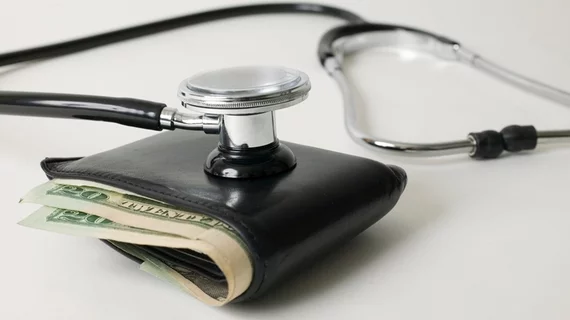High cost of healthcare is an economic killer
Healthcare spending is on the rise, and Americans are feeling the pinch with higher out-of-pocket costs over the last decade. With a large aging population and rising costs, healthcare spending is likely to have negative implications across the economy, according to a recent report from Moody’s.
Compared to other countries, the United States spends about twice as much on healthcare, putting pressure on public sector budgets, impacting business competitiveness and straining household budgets.
Cost breakdown
In 2016, healthcare spending reached $3.3 trillion, about 18 percent of GDP. The sector is also the biggest employer in the country with about 11 percent of the workforce, or 16 million people, but the economic benefits that come along with that output also have a “high price tag,” according to Moody’s.
Costs are anticipated to keep rising about 5.5 percent annually on average over the next decade as the U.S. population ages, CMS estimates, posing “a challenge for the U.S. government, households and businesses,” the analysis reads. Despite this, the U.S. isn’t faring any better when it comes to key measures of population health, such as life expectancy and infant mortality rates.
By 2028, healthcare spending will make up 29 percent of the federal budget, from 25 percent in 2018, Moody’s reported, citing Congressional Budget Office projections.
“Absent corrective fiscal measures, we project higher spending on healthcare, together with higher spending on Social Security and interest payments, will push the federal budget deficit above 8.0 percent of GDP by fiscal 2028, a level only previously reached following the 2008-09 global financial crisis,” the report found.
Contrary to most advanced economies, about half of the U.S. population obtains healthcare insurance coverage through their employer, which is why more than half of national healthcare spending comes from the private sector. Other countries are more likely to cover all citizens through public healthcare, with the government responsible for paying most costs.
Only 40 percent of the U.S. population receives coverage through the government, via Medicare, Medicaid and the Children’s Health Insurance Plan. About 7 percent purchase their own private insurance, and nearly 10 percent are uninsured and pay all expenses out of pocket.
Insurance premiums and out-of-pocket expenses—which represent the bulk of healthcare spending for households—are also rising. Americans covered by employer-sponsored plans have seen their costs rise faster than wages over the last decade, while those covered in federal programs have also seen high and rising expenses.
With household consumption accounting for 70 percent of annual economic output, high healthcare costs that negatively impact finances will reverberate through the U.S. economy, Moody’s noted. Already, many households are adjusting their finances to pay for healthcare by spending less on food, clothing and basic household items.
“The erosion of households' purchasing power could weaken the retail goods and services sectors, whereas the impact on households' debt repayment capacity might affect the large U.S. consumer finance sector,” the report reads.
Economic suffering
Higher healthcare costs contribute suffering in other areas of the federal budget, putting a damper on the economy as a whole.
“Given the government's limited flexibility to decrease spending on other budget items, mandatory health spending is increasingly crowding out spending in areas that would also otherwise enhance economic output and productivity, such as education and infrastructure, without materially improving population health relative to countries that spend less,” the report predicted.
Over the last two decades, the gap between government spending on healthcare versus education has “considerably widened,” with healthcare overshadowing education spending 8 percent in 2016, compared to equal footing of about 15 percent of total spending each in 1992. Education and infrastructure will likely shrink to 33 percent of spending, down from the current level of 44 percent, as healthcare costs rise.
Local and state governments will also feel this strain as spending on Medicaid continues to rise. The program, which is jointly funded by states and federal government, accounted for nearly 30 percent of states’ spending, though spending varies widely based on differences across states. More than half of state spending growth since 2012 has been attributed to Medicaid, with states that expanded the program under the Affordable Care Act seeing larger increases in enrollment and spending compared to those that did not expand.
“State Medicaid spending is likely to grow faster than tax revenue over the next decade, taking up a greater share of states' budgets,” the report found. “For states that expanded Medicaid, the reduction of federal contributions could put more immediate pressure on budgets.”
U.S. companies are increasingly finding themselves less competitive compared to other countries where healthcare costs aren’t rising as quickly. Strategies to combat higher costs also come with tradeoffs, such as limiting benefits that could impact the ability to retain and attract a competitive workforce.
Various cost reduction strategies across the healthcare space, including both private and public sectors, will have some impact on rising costs, albeit gradually, according to Moody’s. Payment models are shifting toward value-based care that will increasingly reward cost-effectiveness and care quality rather than volume.

